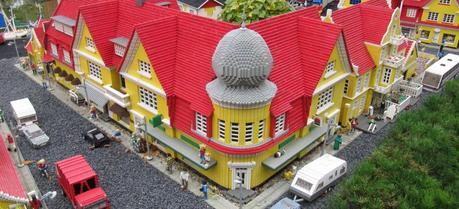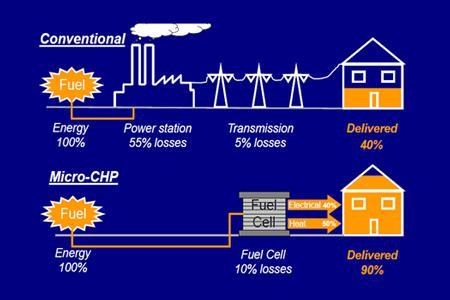 Fuel cell-based micro CHP units will be tested in 1,000 private homes in the EU. (Credit: Flickr @ Loozrboy https://www.flickr.com/photos/loozrboy/)
Fuel cell-based micro CHP units will be tested in 1,000 private homes in the EU. (Credit: Flickr @ Loozrboy https://www.flickr.com/photos/loozrboy/)Over the next four years, fuel cell-based micro CHP (Close Packed Hexagonal) units will be tested in 1,000 private homes as part of the EU project Ene.field.
One thousand European households, including approx. 70 Danish, will have their very own private micro CHP unit installed over the next four years. With DTU Energy Conversion in charge of gathering and analyzing the large amount of data, the promising fuel cell technology will be tested in an EU project comprising 26 participants from industry and research.

(Credit: Technical University of Denmark)
Fuel cells allow a highly efficient conversion of gas to electricity and heat—so efficient, actually, that fuel cell-based micro CHP units are believed to be able to reduce carbon emissions by up to 40 per cent compared to heat and electricity generated by steam boilers. But it will now be put to the test whether the units keep what they promise.
“The project will help mature the products and overcome teething problems, thus paving the way for a market introduction of the micro CPH units in 2017,” says Eva Ravn Nielsen, Center Manager, FCH Test Center. Project Manager Jonathan Hallinder adds:
“We need to quantify the environmental benefits and test under which financial conditions such micro CPH units can exist. Will government subsidies, for example, be required? How do you make it easier and more profitable to sell surplus electricity to the grid? And do the end-users have any reservations? The data analyses will therefore not be purely technical, but will also include any political barriers.”
The test users will be selected by the producers in collaboration with local energy companies.
The users start by completing a questionnaire about their consumption for the past three years. The questionnaire was the first challenge to be solved by the DTU group.
“It had to be adapted to 12 countries and translated into eight languages. Gas consumption in Germany, for example, is calculated in kWh, whereas we use cubic meters in Denmark, to name just two of the many differences to be taken into account,” says Jonathan Hallinder.
The large amounts of data from the approx. 100 measuring points at the individual users will be anonymized before being sent to the researchers, who will only learn from which climate zone the data originate.
“We are not supposed to assess the individual product, but the producers will of course get their own data to enable them to optimize their plants,” says Eva Ravn Nielsen.

